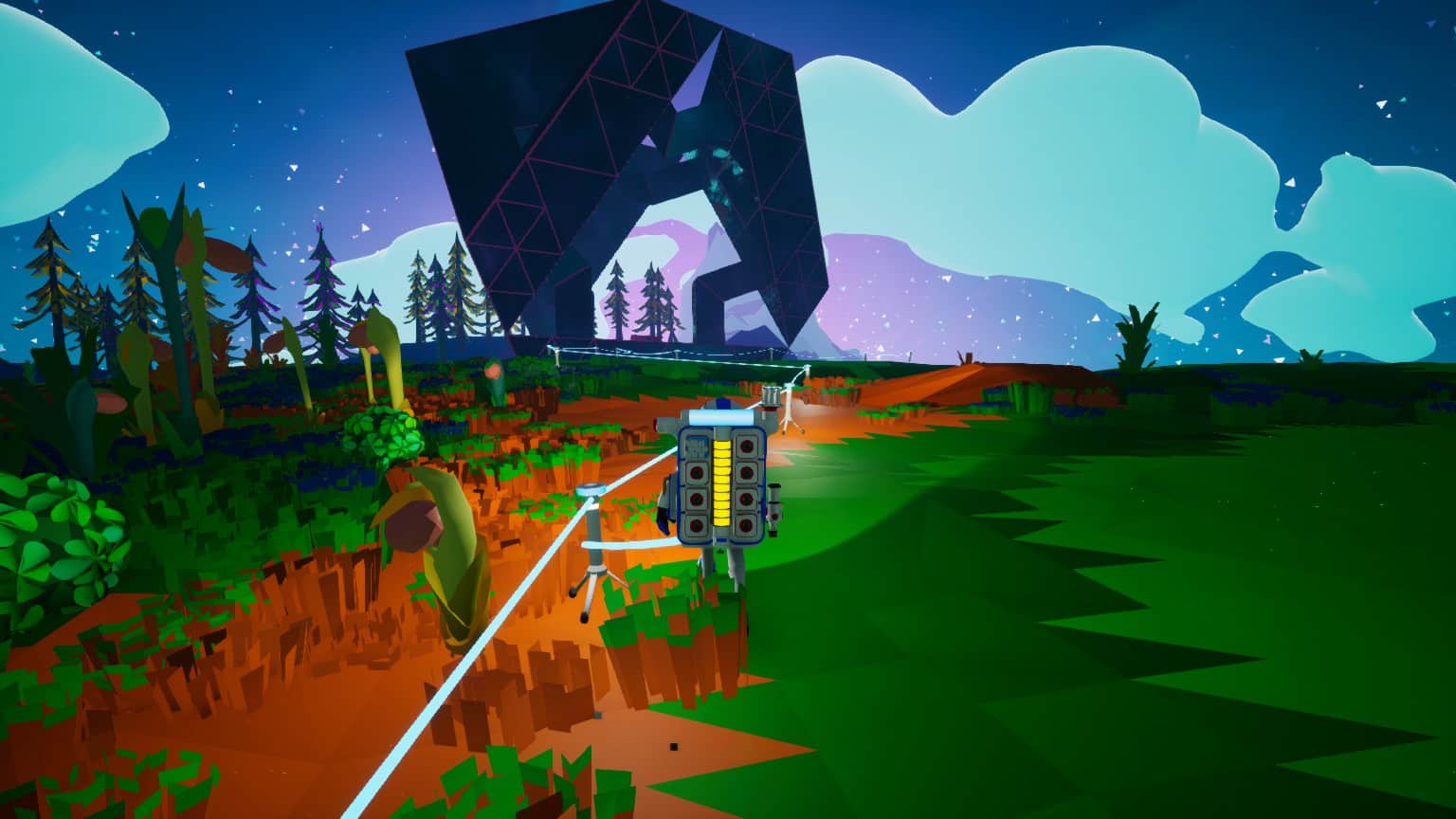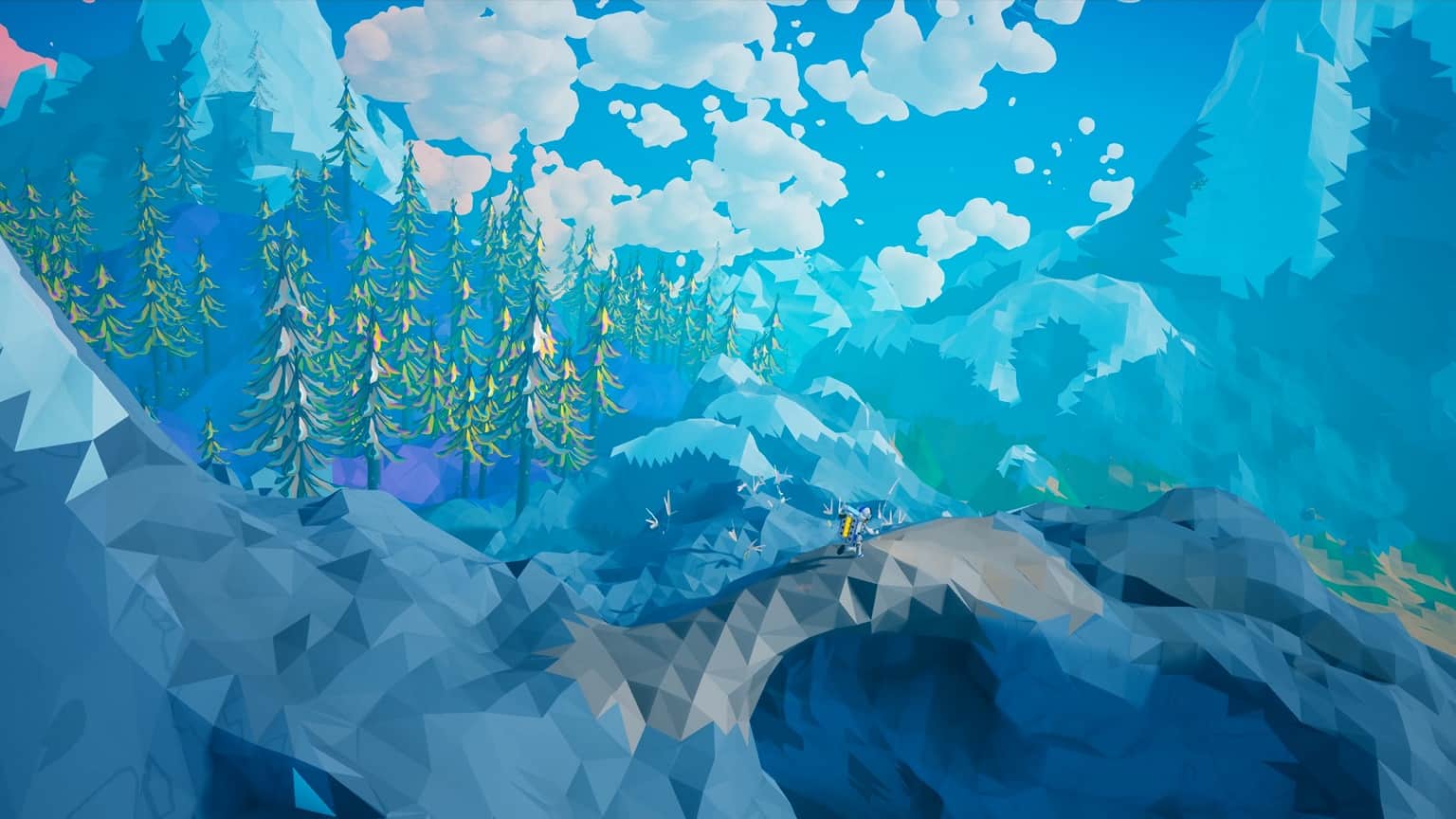Platforms:
Xbox One, PC
Released:
February 6, 2019
Publisher:
System Era Softworks
Developer:
System Era Softworks
System Era Softworks released its first full version of Astroneer on the 6th of February. After nearly two years in Early Access, the game has a gathered a dedicated and passionate following on Discord and Reddit. Once I experienced Astroneer’s peaceful gameplay and colourful graphics, it was easy to understand why.
Astroneer can be best described as a survival sandbox game set in outer space. Dropped on an unknown planet, alone, just near your shelter, you are one of many Astroneers exploring an unknown planet in search of wealth. Armed with a set of tools, the main thing you’ll do is explore. There are no NPCs, enemies, or monsters in Astroneer, and the biggest immediate threat is running out of oxygen. As such, it feels like the only true characters are you and the environment.
Astroneer’s environment itself is incredibly captivating and alluring. With its bright graphics and otherworldly landscapes, I was tempted to jump straight in and run towards every colourful plant in sight. There is a lot to see; aside from fauna and flora there are plenty of passageways, caves, and pieces of debris left by other Astroneers that beg to be explored. However, while oxygen is unlimited near your shelter, you’ll quickly run out of oxygen once you stray too far away from your home base. Once you’re disconnected from your shelter’s air supply, a blue bar on your backpack keeps ticking backwards until finally, you suffocate. It didn’t take long for me to suffocate many, many times.
To remedy this, you’ll have to build tethers to connect to an oxygen generator. By dropping a tether every ten steps or so and connecting them, you can create oxygen supply lines. These cables not only provide you with oxygen, they also provide a source of light when exploring dark environments. It only took a few hours of playtime for me to have a sprawling network of oxygen supply lines lighting up the landscape. As I created more and more oxygen lines, I was able to explore more challenging underground spaces and collect rarer materials.

I found gathering resources and crafting tools to be one of the most relaxing and engaging features of Astroneer. Literally anything in your immediate surroundings can be manipulated, changed, or collected. With a terrain tool that sometimes feels like a vacuum, you can suck up soil and dig tunnels deep into the centre of the planet, often discovering other spaces and materials in the process.
While you don’t need resources to survive, you can use them to craft better tools in-game. Some of the later in-game upgrades include vehicles, tractors and drills, allowing you to harvest more resources and cover greater distances. As well as resources, you can also collect research samples. These samples can be analysed in a research lab near your base and converted into bytes, a virtual currency with which you can unlock more advanced equipment and resource recipes. When I ventured deep into an underground cave, I even found an enormous research sample left behind by other explorers. Needless to say, I was able to upgrade my equipment after that!
“Once you wrap your head around everything, Astroneer’s crafting and resources mechanics are remarkably soothing to interact with.”
Astroneer’s crafting features are certainly the biggest pillar of the game. While they can feel complex initially, they are fairly easy to master. One of the new features of Astroneer’s full release is a new and improved tutorial, which System Era Softworks added in late last year. I felt like the tutorial was still clunky in places and could still use further improvement, but it was enough to give me a base understanding of the game and get me started.
Once you wrap your head around everything, Astroneer’s crafting and resources mechanics are remarkably soothing to interact with. While crafting processes still feel a tad cumbersome in places – sometimes unnecessarily having to press buttons repeatedly when creating equipment for example – they did keep me engaged.
Even though there is no set objective to structure your gameplay, oxygen lines allow you to structure the landscape and orient yourself more easily. It’s easy to find your way back to your shelter, and remember specific spots where you can harvest valuable materials. By using oxygen lines this way, I felt like System Era Softworks used the crafting system to its full potential. The way the crafting system can give players agency to structure their own experiences is impressive, and it compelled me to explore the planet further.
Even though Astroneer is officially a survival game, a playthrough feels like a completely stress-free, serene experience. I often thought the game had more in common with games like Abzu or Stardew Valley than it does with titles like No Man’s Sky. There are no real set targets in Astroneer and, other than your own curiosity, there isn’t much to propel things forward or threaten your survival. But this is also part of the game’s strength and its charm. With its relaxing soundtrack, harvesting resources rarely feels like a grind and it’s easy to while away the hours exploring.
Positive:
- Beautiful graphics that will immediately draw you in
- Interesting crafting mechanics that keep you engaged
- Relaxing and serene gameplay
Negative:
- The game's tutorials feel clunky and could use improvement
- Crafting processes can sometimes feel slightly cumbersome
If you enjoy crafting, building, and mindfulness, Astroneer is definitely a good match for your library and is a game that shouldn’t be missed.
The game is now available and you can pick it up from Steam, Xbox Play Anywhere, and Humble Bundle.












